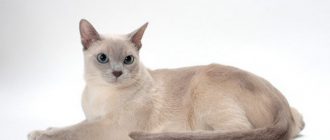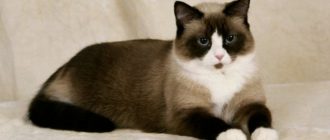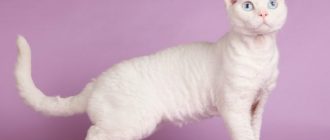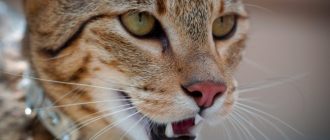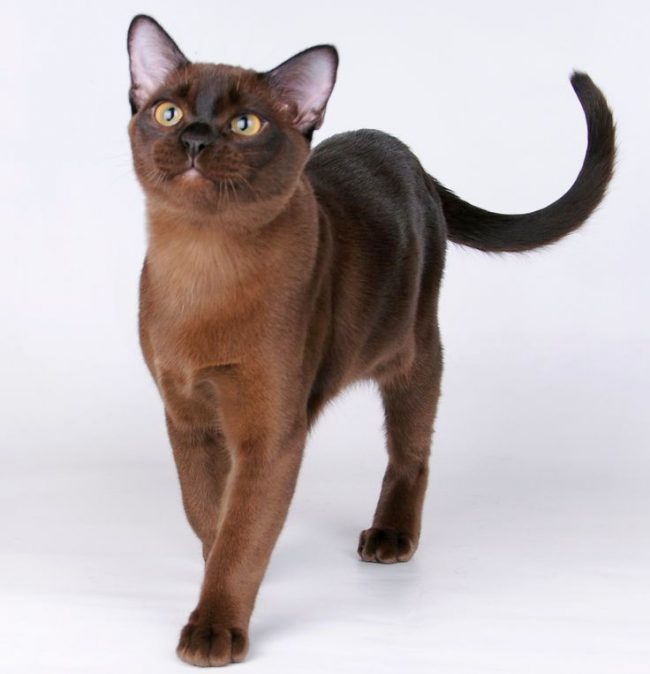
Classification
Origin: Southeast Asia, Burma
Class: FIFe Classification: Category III – shorthair & Somali, BUR standard. WCF Classification: Category III – Shorthair, IHC standard. CFA Classification: Category SH – Shorthair, Burmese standard.
Color: Burmese cat colors has in compliance with 2 standards – European and American, isolated in a separate breed, which within itself also has 2 subspecies – traditional and modern. European color provides the following colors: cream, brown, chocolate, lilac, blue, red, tortie (combination of all monocots) .American standard: platinum, blue, champagne, sable (brown according to European standard).
Sizes: Medium-sized body; weight: cats from 3 to 3.5 kg, cats – up to 6 kg (at least 5)
Life span: 10 to 15 years
Burmese are muscular small animals with short, thin and shiny coat, tight to the skin.
Like the Cornish Rex with Devon Rex, undercoat as such missing.
With tactile contact, it seems that you are stroking satin or silk. The body of the cat is dense, legs are thin, the tail is of medium length.
In appearance, the cat’s heavy weight does not “feel” in any way, for which the bourmets were nicknamed “silk bricks.”
Cat’s eyes are wide apart, with an “eastern” cut, like in Egyptian Mau, which is why some associations with a look of sullenness.
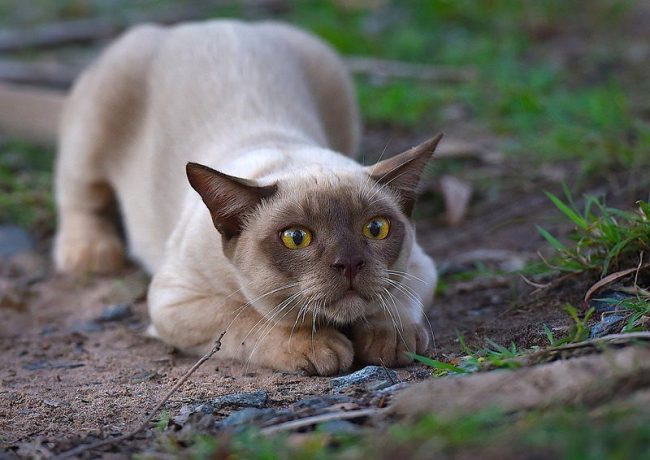
A distinctive feature of the Burmese cat are amber honey eyes
Content
- 1 Breed History
- 2 Character and Psychology
- 3 Application
- 4 How to choose a kitten
- 5 Care features
- 5.1 Combing
- 5.2 Walk
- 5.3 Nutrition
- 6 Health
- 6.1 characteristic diseases
- 6.2 Vaccinations
- 7 Knit
Breed history
Contents
The history of the Burmese cat breed began with his arrival in America a kitten named Wong Mau of dark chocolate color with Dr. Joseph Thompson.
Deciding to try himself in breeding work, he began to cross Siamese cats with Burmese, while only litter was selected kittens with a dark color.
And eight years later, in 1938, at the cat show was introduced a new breed – burmese.
Ten years later, a Burmese cat appeared in England. There breeders went further and brought feline heredity genes of red color.
So there were seals with red and cream shades, and tortoiseshell in these variations.
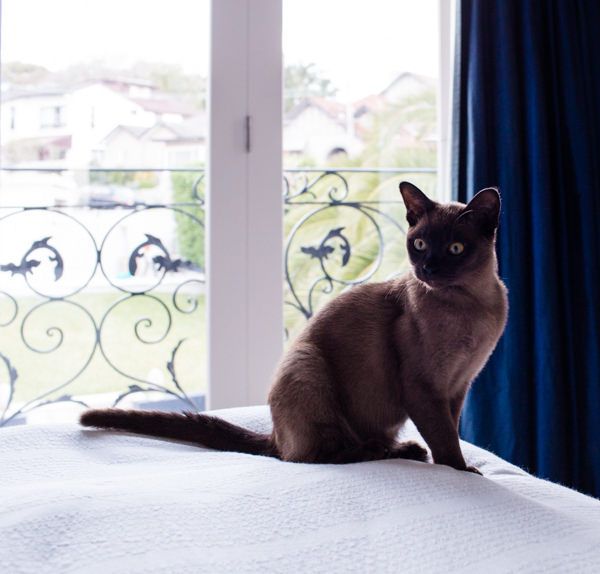
The Burmese cat loves to follow its master everywhere, therefore it is also called a cat-dog
However, American breeders did not accept the innovation and remained unconvinced.
As a result, two standards of a Burmese cat turned out. Wherein European did not provide, unlike American, mandatory roundness of forms.
Character and Psychology
Cat lovers will not pass by these graceful and beautiful animals. They are the embodiment of the “golden mean.”
Strict and elegant, they do not have too pronounced features character.
If you do not know what a Burmese cat looks like, the photo will give about this view, and already on it you will be struck by their eyes honey amber eyes.

Burmese cat professor
As for their character, it is fully consistent with the external beauty.
Like related neoriential and thai cat burmese will show you his love tactfully, and even if from an overabundance of feelings – let’s say, after long absence – it will begin to “butt you”, it will not cause negative emotions.
Burmese women prefer to spend all time with the owner, the shadow following him and actively “helping” in household chores.
Because of this attachment, they are also called “cat-dog.”
Application
The animal, like manchkin, is perfect in order to communicate with children.
About other breeds of cats, distinguished by kindness and friendliness, can be read in articlehttps: //kot-pes.com/samyie-dobryie-porodyi-koshek/
Unlike other cat breeds, it will never show aggression, will not give change, even if the baby lifts it by the tail.
So for children, burmese will become a true friend, ready to play for hours.
She prefers constant communication, which sometimes can even to tire tired adults, but not children.
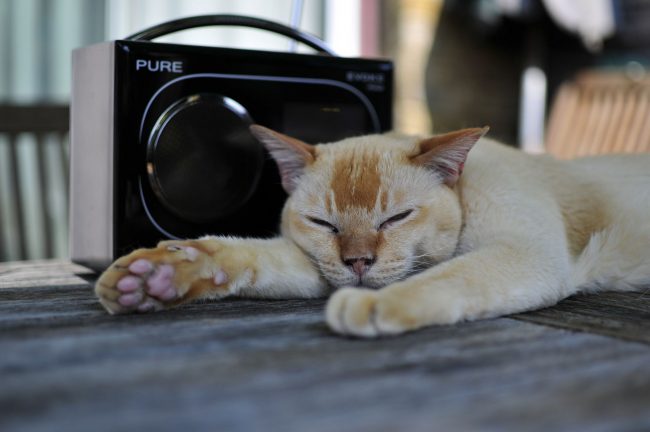
A Burmese cat will demand maximum attention from you. It’s good if there are children in the house who can entertain pet
With other pets, Burmese cats will easily find mutual language.
But it is worth remembering that, although the character of this cat is akin to wool and truly “silk”, it has the leader’s habits and strong will.
She will inevitably “conquer” both territory and the love of all members families.
How to choose a kitten
Look for a Burmese cat in a specialized cattery.
Otherwise, there is a risk that they will slip a culled animal or generally outbred.
Find a breeder with good references. examine the conditions in which he contains his animals, and Check for the appropriate certificate.
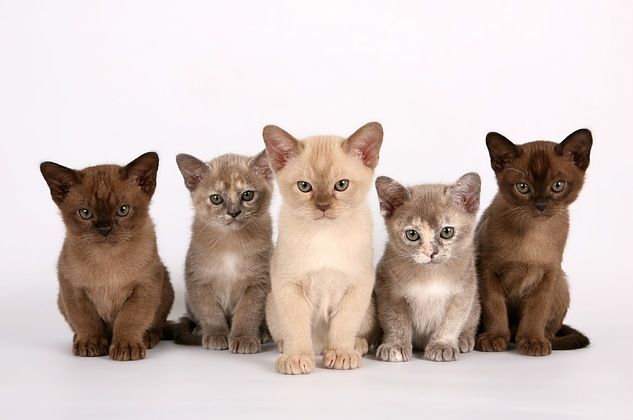
There are many variations of the color of a Burmese cat, however the most popular is the color of dark chocolate
In addition to the inspection, ask to show you the parents of kittens.
If the breeder is honest, he will certainly meet you and will tell in detail and show all the documents and at least one a parent, more often a mom, because dad is sometimes brought from another nursery.
Kittens should be mobile, playful, with shiny hair, clean eyes and ears, and have all the documents.
Important! Kittens can be taken at the age of not less than 3 months (12 weeks). A decent breeder never sell a kitten earlier, because he is not yet fit for adaptation in another family, besides there may be health problems, both physical and psychological.
The most popular burmese chocolate cat color, they are offered more often.
But if you prefer kittens of a different color, they are optional can also be found.
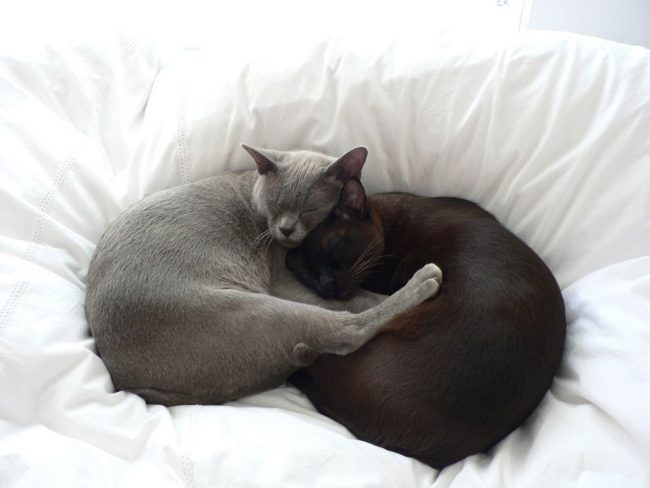
The Burmese cat gets along well with other animals in the house, however doesn’t give the palm of leadership to anyone
Care Features
When keeping a Burmese cat, the owners will need the main manner of attention and willingness to communicate.
Maybe outwardly these cats seem clumsy, but jumping and to climb all kinds of devices and trees they are very love.
So immediately buy something suitable for them. And be ready to give the pet the maximum possible time.
The best thing is to connect the children to this. Burmese will “help” them in everything – and do homework, and do the dishes, and the poem tell parents.
And you just have to read the newspaper with her, drink tea and watch your favorite series.

The Burmese cat loves to help its owners in everything: be it watching your favorite TV show, or doing homework on music
Combing
Caring for cats is easy – short hair does not require constant combing, you can just iron it a couple of times wet hands or walk with a rubber brush.
True, seasonal molting will require additional time for combing, but this happens only twice a year. The host is not used in this case.
Frequent washing is not recommended only if it occurs necessity.
If, in the presence of a claw, cat claws are all they remain long, they must be cut.
About how to properly cut the claws of a cat, it is written here: https: //kot-pes.com/kak-podstrich-koshke-kogti/
This procedure is carried out approximately twice a month.
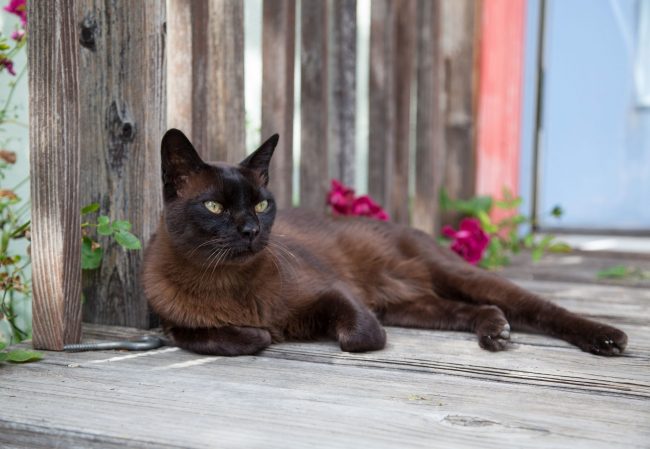
Burmese cats are always used to expressing their opinions, so you will often hear their voice
Walking
It is advisable to walk Burmese cats, but only on leash – to avoid excesses.
You can also take them to the cottage, there they run free.
Just take care of them to too curious cat did not get into trouble.
In order to protect the animal from ticks, put on a protective collar.
Food
Burmese cats will require acquisition high quality solid feed – precisely because tendency to gingivitis.
But also ordinary food – brown bread and pasta, boiled vegetables and cottage cheese, unsalted cheese and butter, sausage and ham – them also suitable.
But only as an addition to the main cat food.
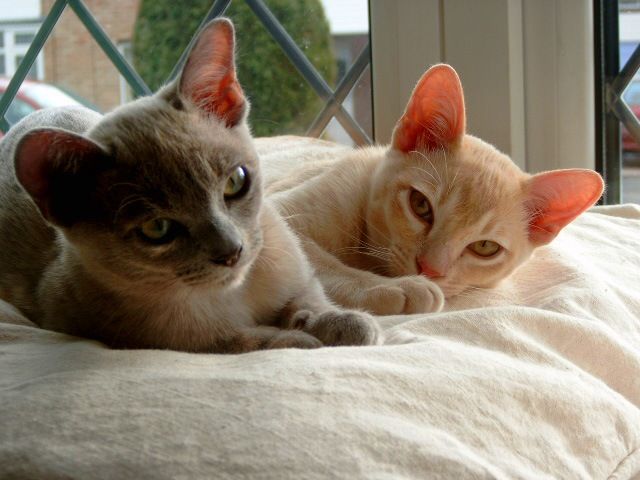
It is important to remember that burmese can not be given vitamins containing algae, from this they have deteriorating eye color
Kittens feeding: three times a day up to six months, up to a maximum of 8 months, then 2 times a day.
Read more about how many times a day to feed a cat, will tell articlehttps: //kot-pes.com/skolko-raz-v-den-kormit-koshku/
Water changes daily, feed should be constant. By virtue of the fact that cats are prone to gluttony, dry food should not be lot.
If the feed is high quality, vitamins are not needed.
Burmese can not be given vitamins containing algae, from this their eye color worsens.
Health
Characteristic diseases
Burmese cats are healthy animals, they only have problems with with teeth.
The presence of gingivitis requires an annual examination by a dentist and the acquisition of professional solid feed, through which tooth plaque is removed.
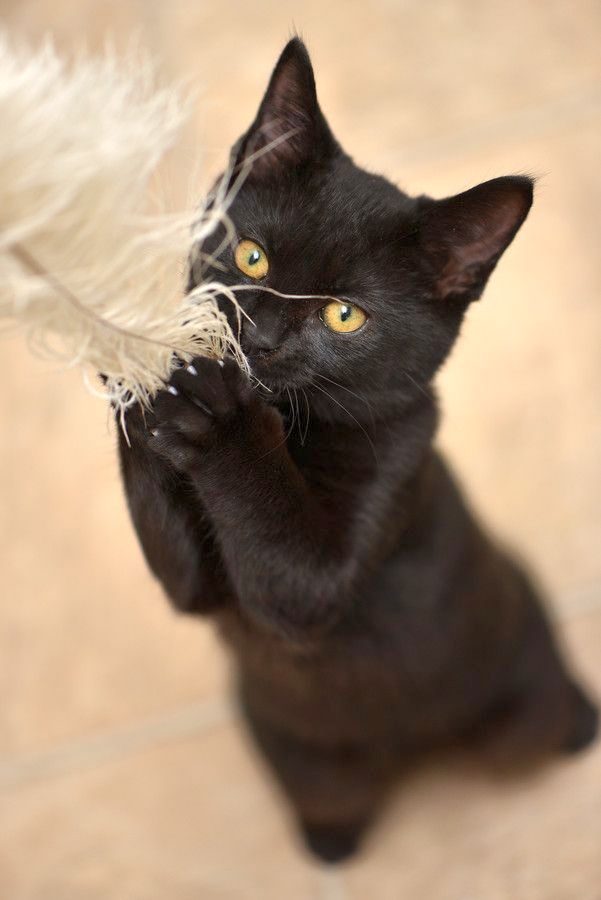
Burmese cats have a playful character
Sometimes Burmese cats have:
– difficulty breathing due to a short nose;
– at birth, kittens have a deformation of the skull;
– rarely lacrimation is observed.
Vaccinations
Once a year, a comprehensive vaccine is given from infections and rabies, 10 days before which the cat should be given anthelmintic drugs.

The Burmese cat always feels like the main member of the family and requires due regard
Knitting
Due to the rarity of the breed, inbreeding sometimes takes place – closely related crossing.
After pregnancy, births usually go away difficult, often requires the help of a veterinarian.
Anna Lyakhovich7 Overall result CharacteristicAggression4Adaptability8Activity8Weight6 Training6Friendliness8Playfulness10Intelligence6Noise4 Add your review | Read reviews and comments

